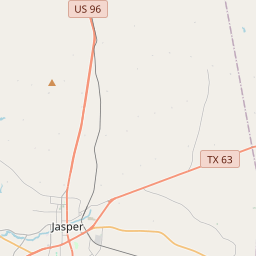Site of J.H. Rowe School
Historical marker location:






Formal public education for African American students in the Jasper area dates to 1875 and the formation of a school at nearby Cold Springs. It moved to a new campus in Jasper in 1924, the same year James Hoff Rowe came as administrator. Born in Panola County in 1876, Rowe attended Prairie View Normal and Industrial College (Prairie View A&M University) and Hampton Institute in Virginia. He served as dean at Prairie View before coming to Jasper. The education programs increased in scope and significance during his leadership, and he remained principal until his death in 1943. The school was later named in his honor, and it remained open until integration in 1968. (2004)
As one of the most visible programs of the Texas Historical Commission (THC), historical markers commemorate diverse topics in Texas history, including: the history and architecture of houses, commercial and public buildings, religious congregations, and military sites; events that changed the course of local and state history; and individuals who have made lasting contributions to the state, community organizations, and businesses.
The world's first rodeo was held in Pecos, Texas in 1883. The event included bronco riding, calf roping, and bull riding.
Jasper County was officially established on February 1, 1836, just weeks before the independence of Texas from Mexico. The county was named after William Jasper, a hero from the American Revolutionary War. In the early days of the county, logging and farming were the primary economic activities. The arrival of the railroad in the late 19th century further contributed to the growth and development of Jasper County.
The county experienced significant changes during the 20th century. The discovery of oil in the East Texas Oil Field in the early 1930s brought an economic boom to Jasper County, leading to increased population and infrastructure development. However, the area also faced challenges, including racial tension and civil rights struggles during the mid-20th century.
Today, Jasper County continues to thrive, with a diverse economy including oil and gas, timber, agriculture, and tourism. The county is known for its natural beauty, including the scenic Angelina National Forest and the serene waters of the Sam Rayburn Reservoir. Jasper, the county seat, serves as a hub for commerce and government activities. The history and heritage of Jasper County are celebrated through various cultural events and museums, ensuring that its past remains an integral part of its present and future.
Jasper County Timeline
This timeline provides a glimpse into the major events and milestones that have shaped the history of Jasper County, Texas.
- 1835 - Jasper County is established on February 1st.
- 1846 - The county seat is moved from Bevilport to Jasper.
- 1861-1865 - Jasper County residents participate in the American Civil War.
- 1881 - The Gulf, Colorado and Santa Fe Railway is built through Jasper County.
- 1901 - The Spindletop oil strike near Beaumont triggers an oil boom in the area, benefiting Jasper County.
- 1950s-1970s - The construction of Sam Rayburn Reservoir boosts the county's economy and recreational opportunities.
- 1996 - Jasper County experiences racial tension and protests following the murder of James Byrd Jr.